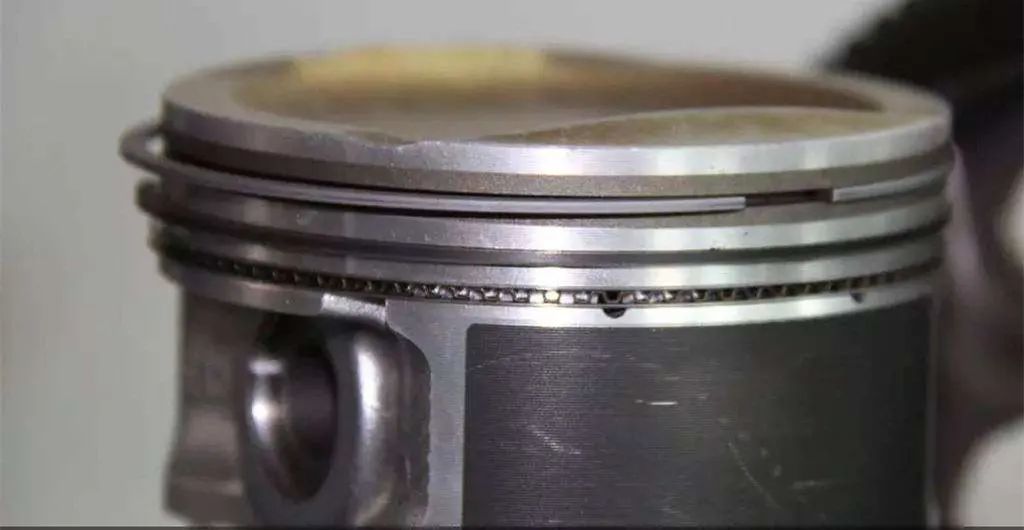The piston ring cannot be completely sealed, and the piston ring pumps oil, so carbon deposits will inevitably be generated on the piston ring. However, the formation mechanisms of gas ring and oil ring carbon deposits are different, let's talk about them separately.
First of all, the air ring. The gas ring directly contacts the combustible gas with high temperature and high pressure, and the temperature is extremely high during operation. The high-temperature and high-pressure combustible gas enters the piston ring groove from the gap between the cylinder wall and the piston, and encounters the engine oil brought up by the pumping action of the piston ring, which will cause the oil to coke and solidify; in addition, when the engine stops, the last injection The fuel injected into the combustion chamber is not combusted, and under the action of the residual high temperature of the piston, it will also coke and solidify, and eventually carbon deposits will be formed and deposited in the piston ring groove. This is the formation principle of gas ring carbon deposition. Only in the air ring, the engine oil brought up by the pumping action of the piston ring is very small, and most of it is the carbon deposit deposited by the incomplete combustion of gasoline. That is to say, most of the carbon deposits deposited on the gas ring are caused by gasoline, and the quality and combustion state of gasoline directly affect the quantity and nature of carbon deposits.
The piston ring is constantly moving up and down in the piston ring groove, and the cylinder is not absolutely circular. The piston reciprocates up and down in the cylinder, and the piston ring is constantly compressed and stretched. Carbon deposits, being constantly squeezed, cannot be retained, only the carbon deposits in the back gap can remain. In other words, carbon deposits are only left on one side of the air ring, and it is impossible to lock the air ring to death, and it is impossible to cause the engine to burn oil. At the same time, carbon deposits are deposited in the back gap, which objectively reduces the back gap, but can strengthen the seal and reduce the pumping effect.

